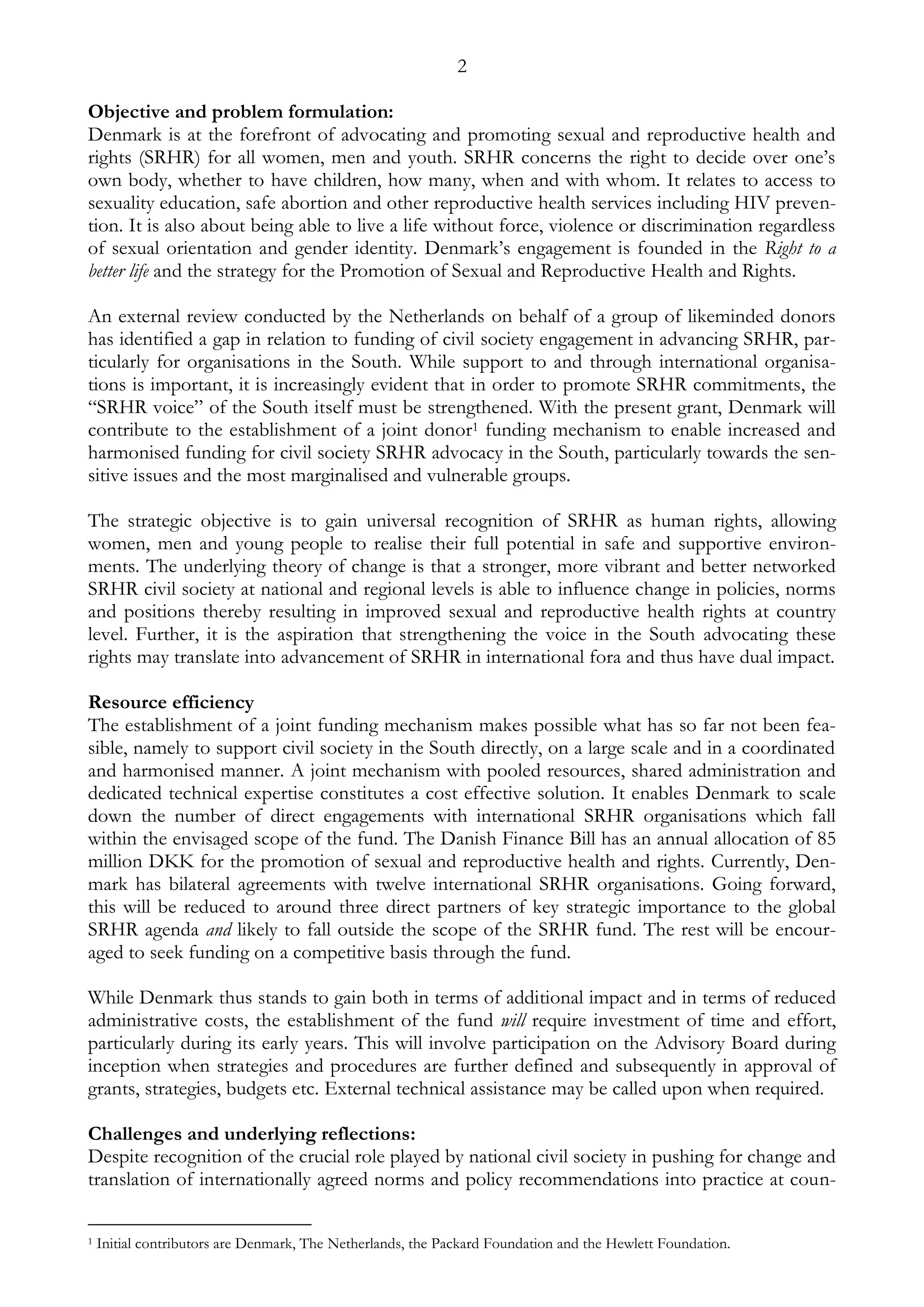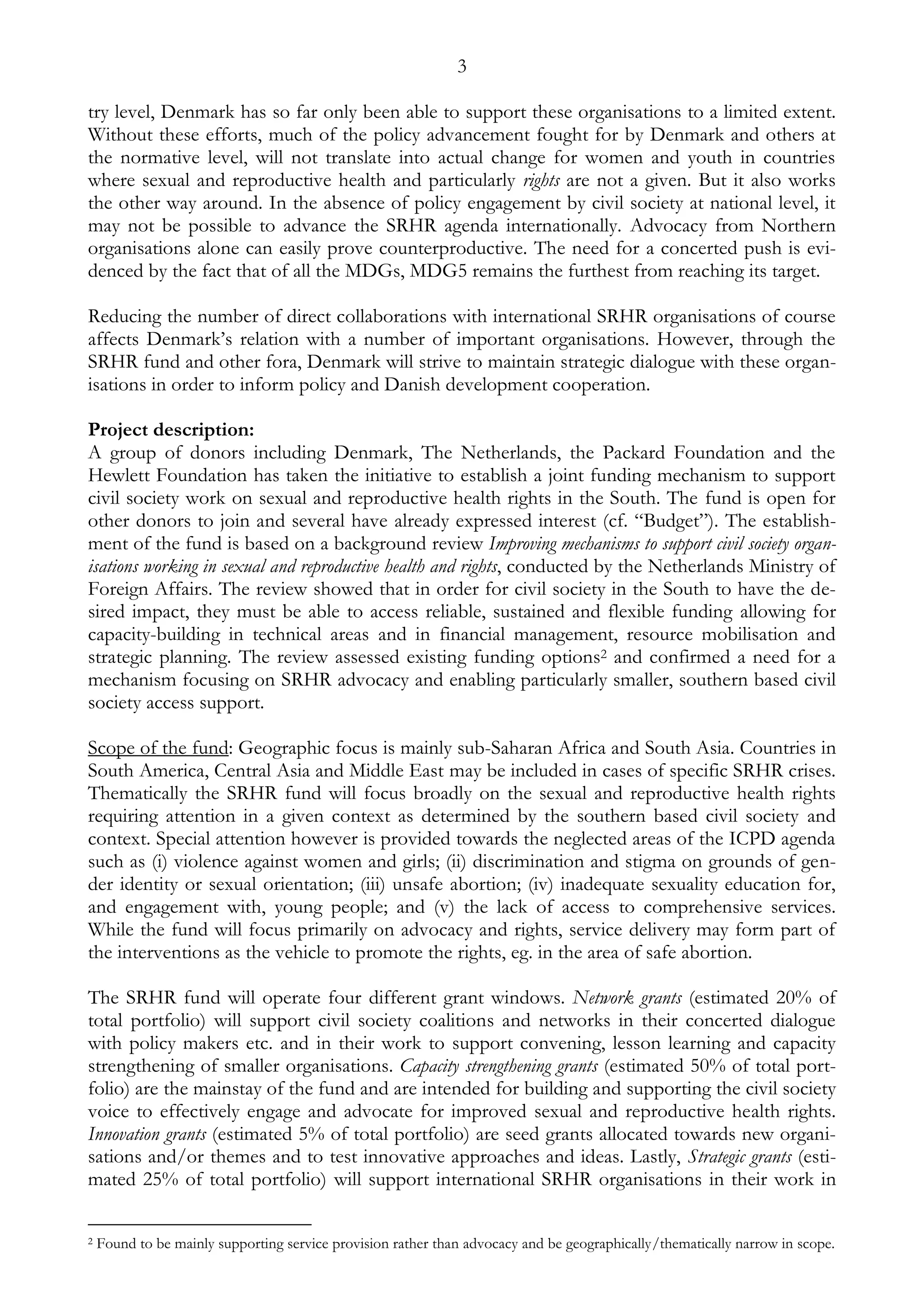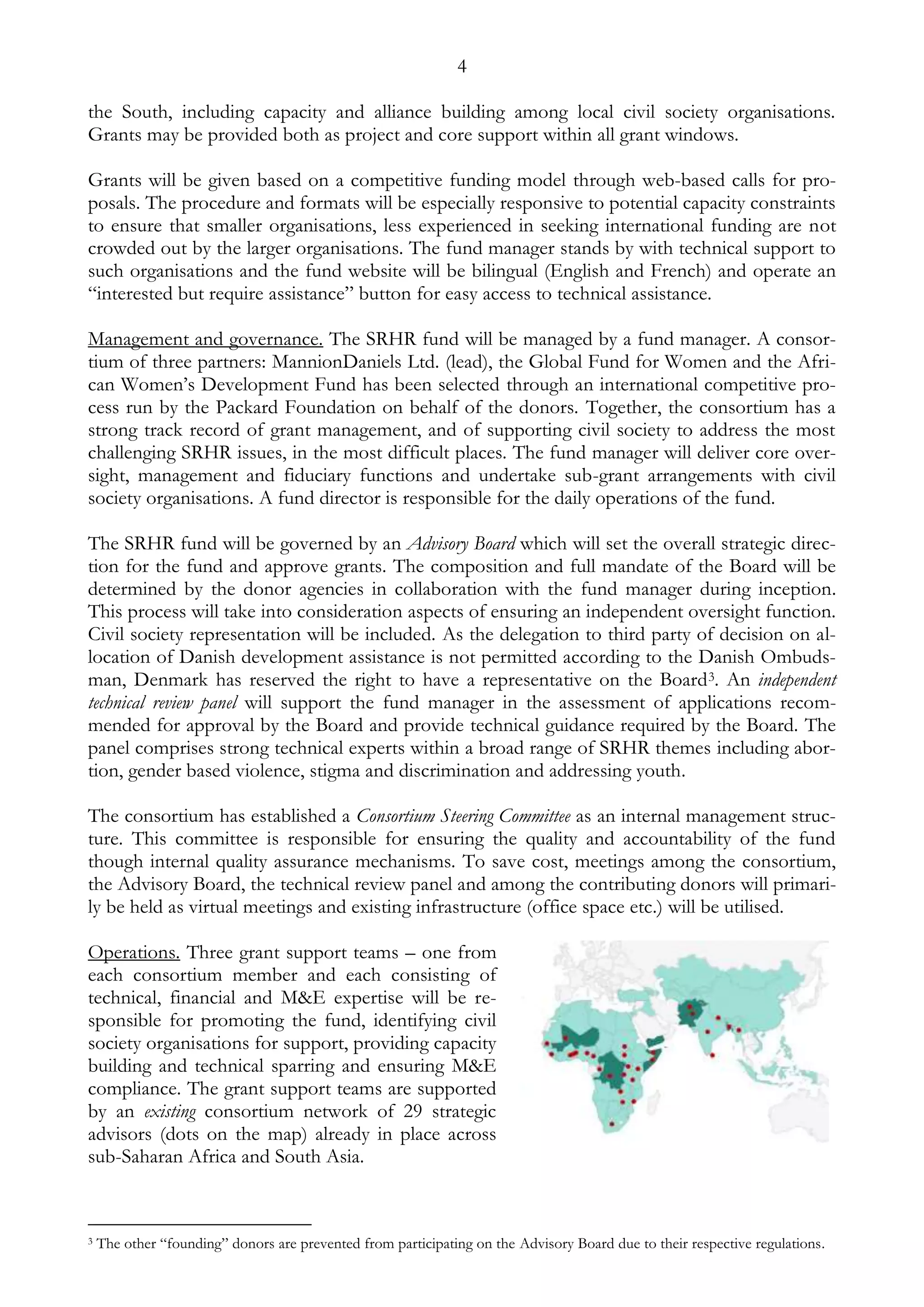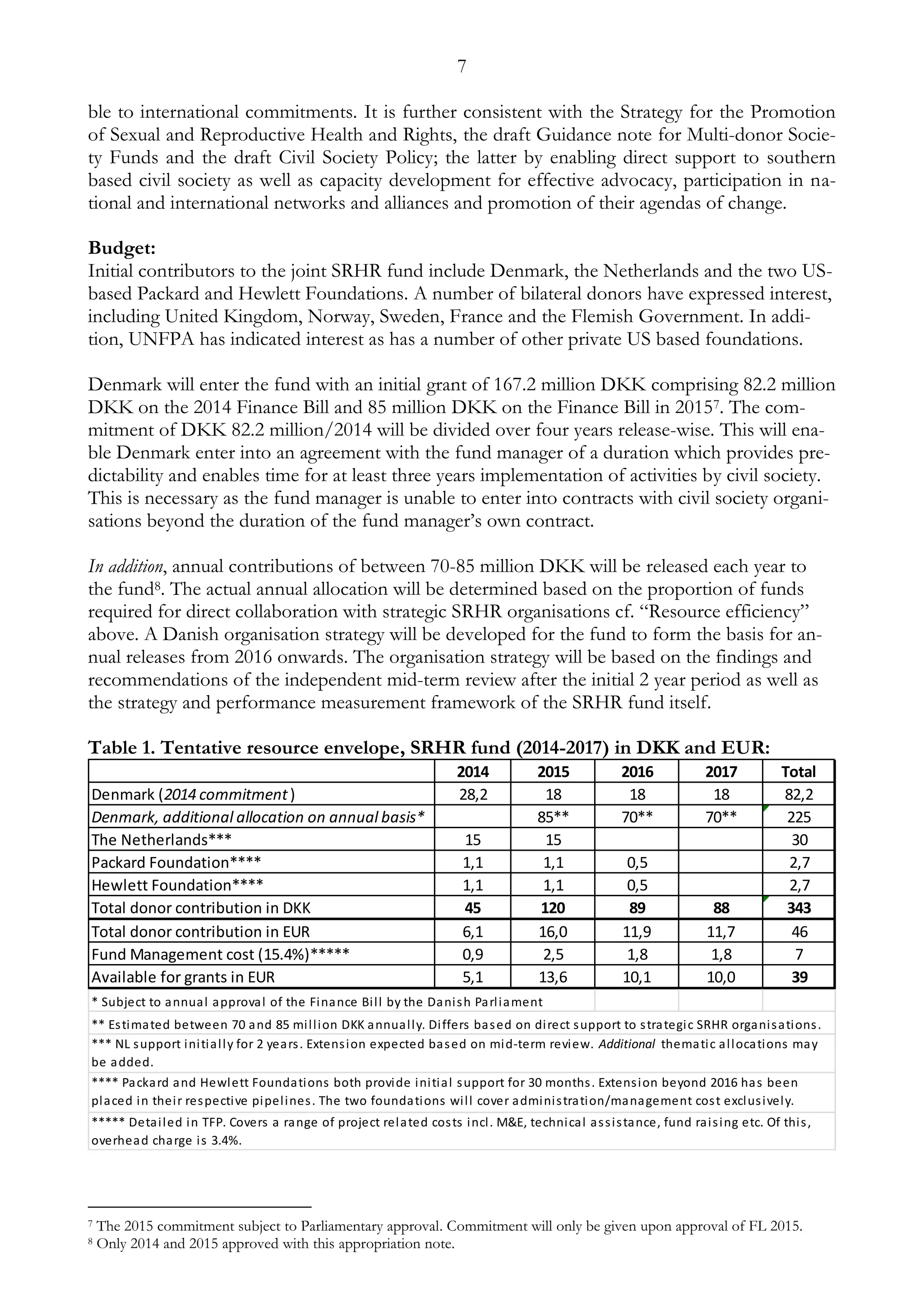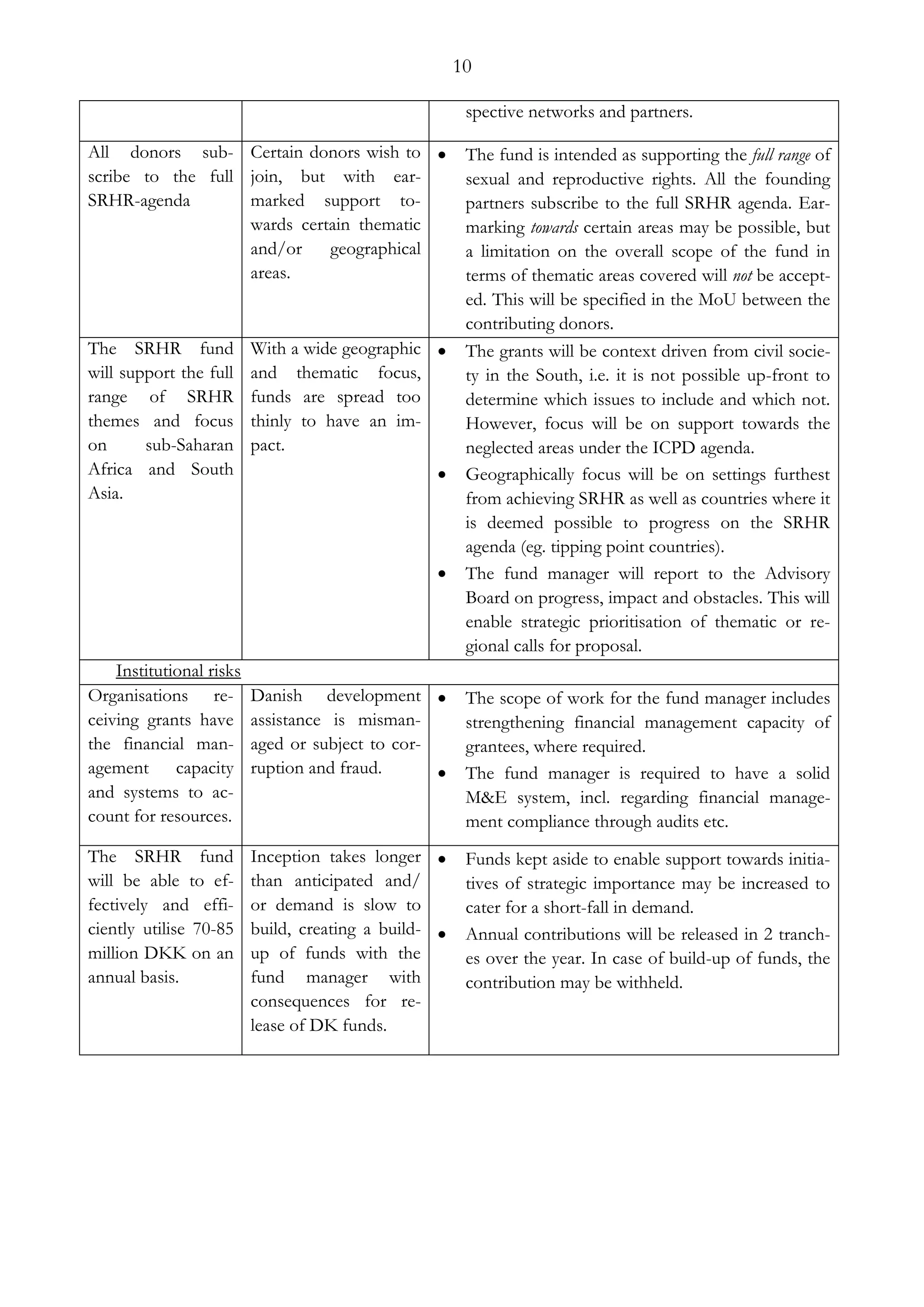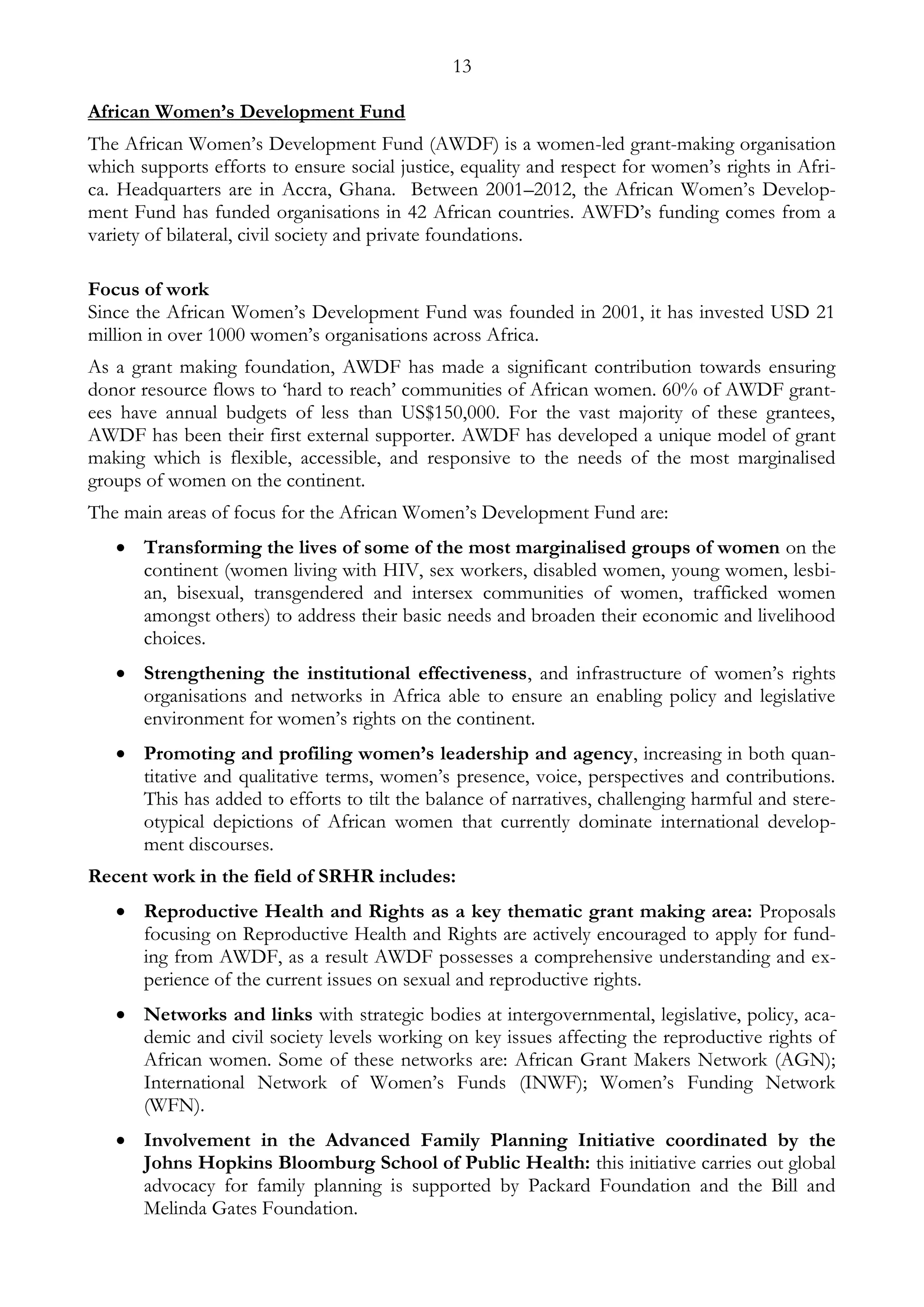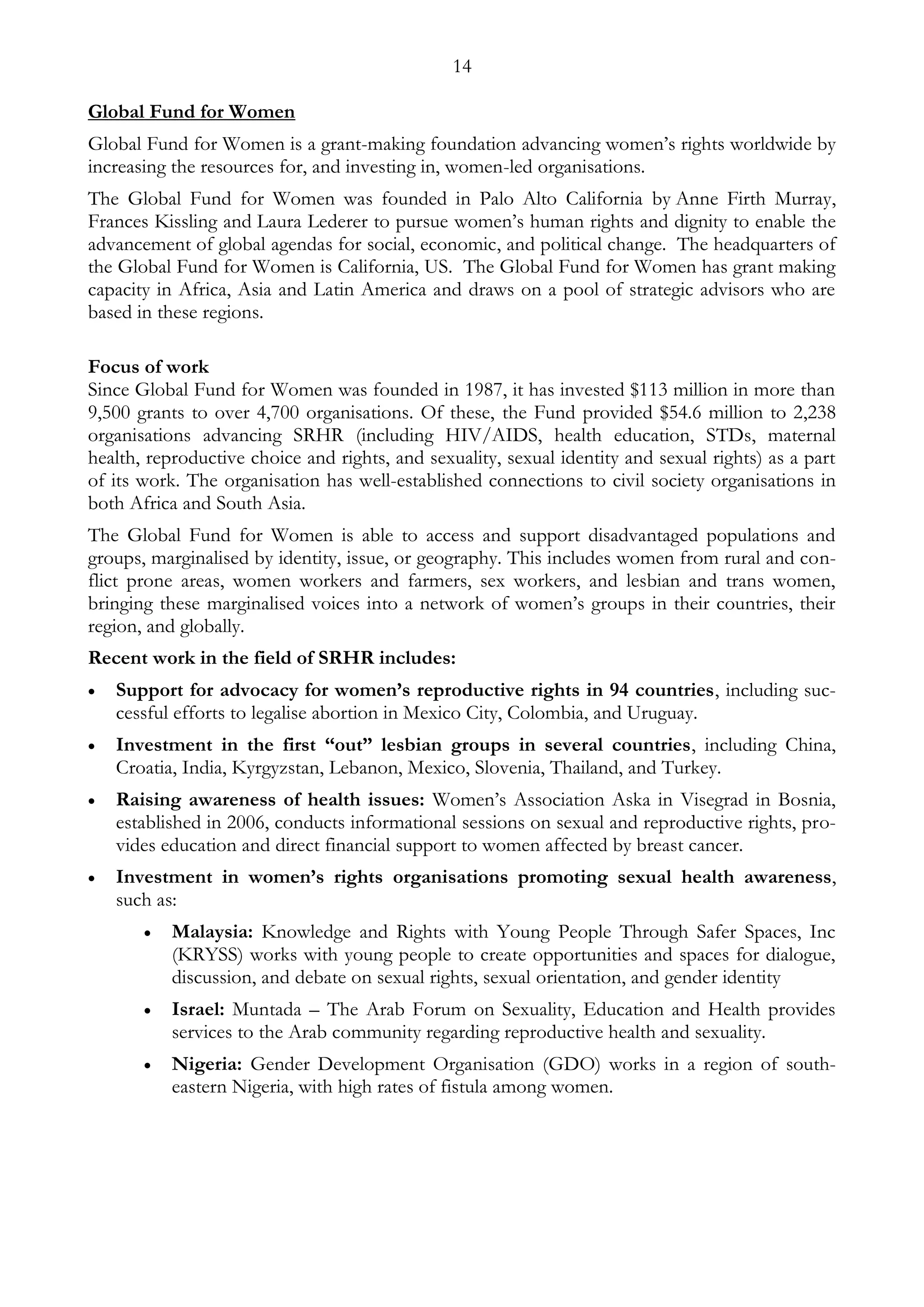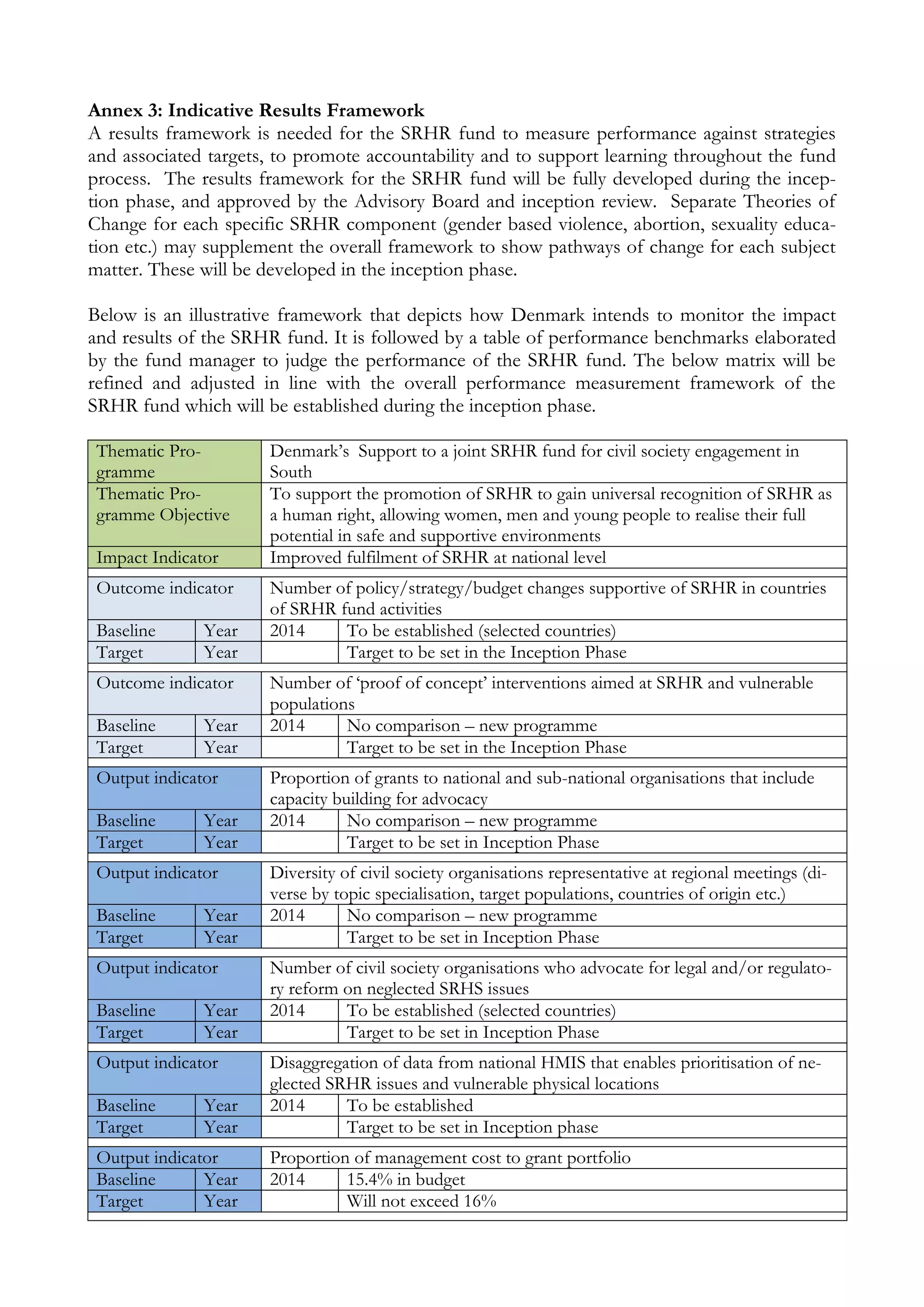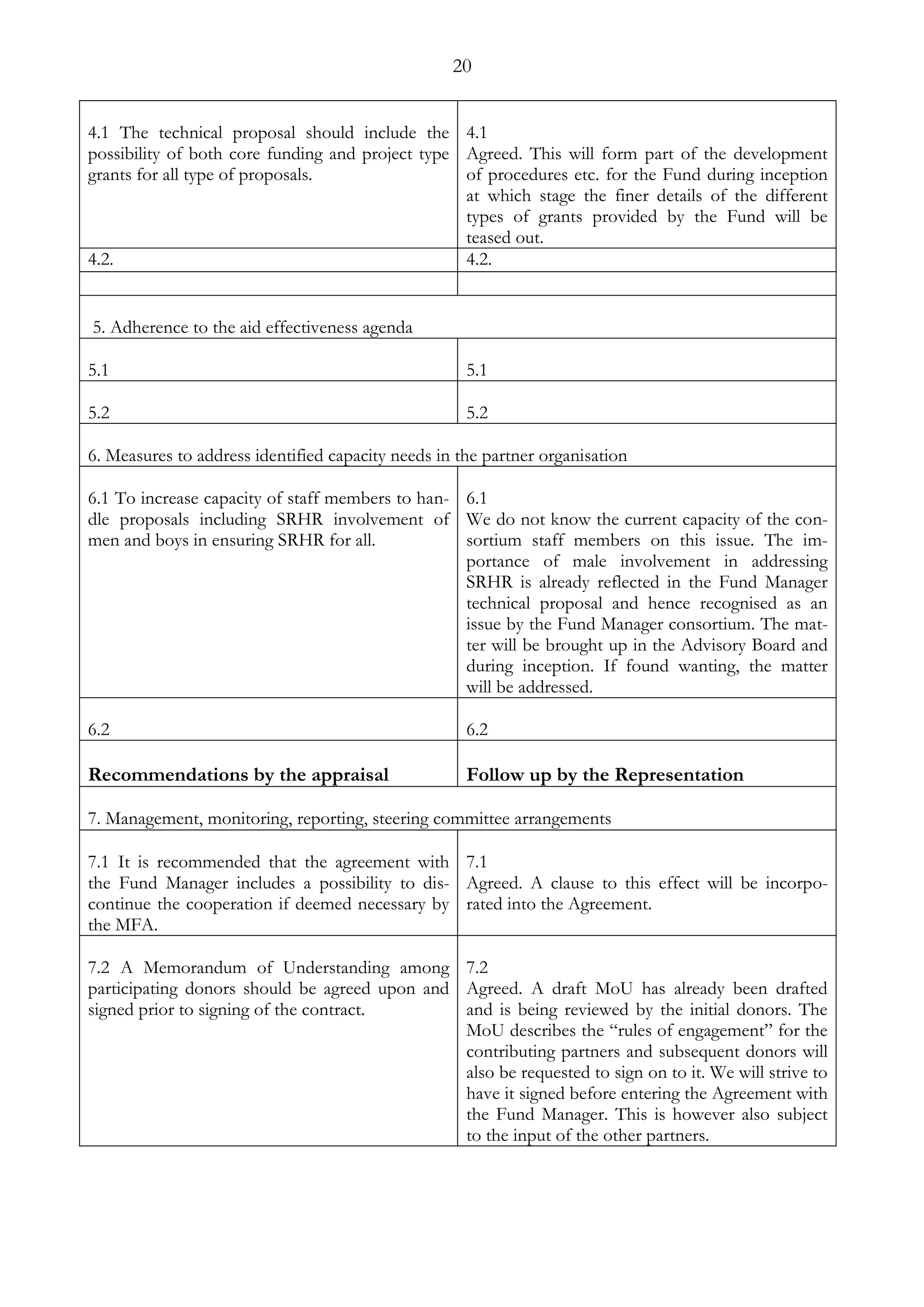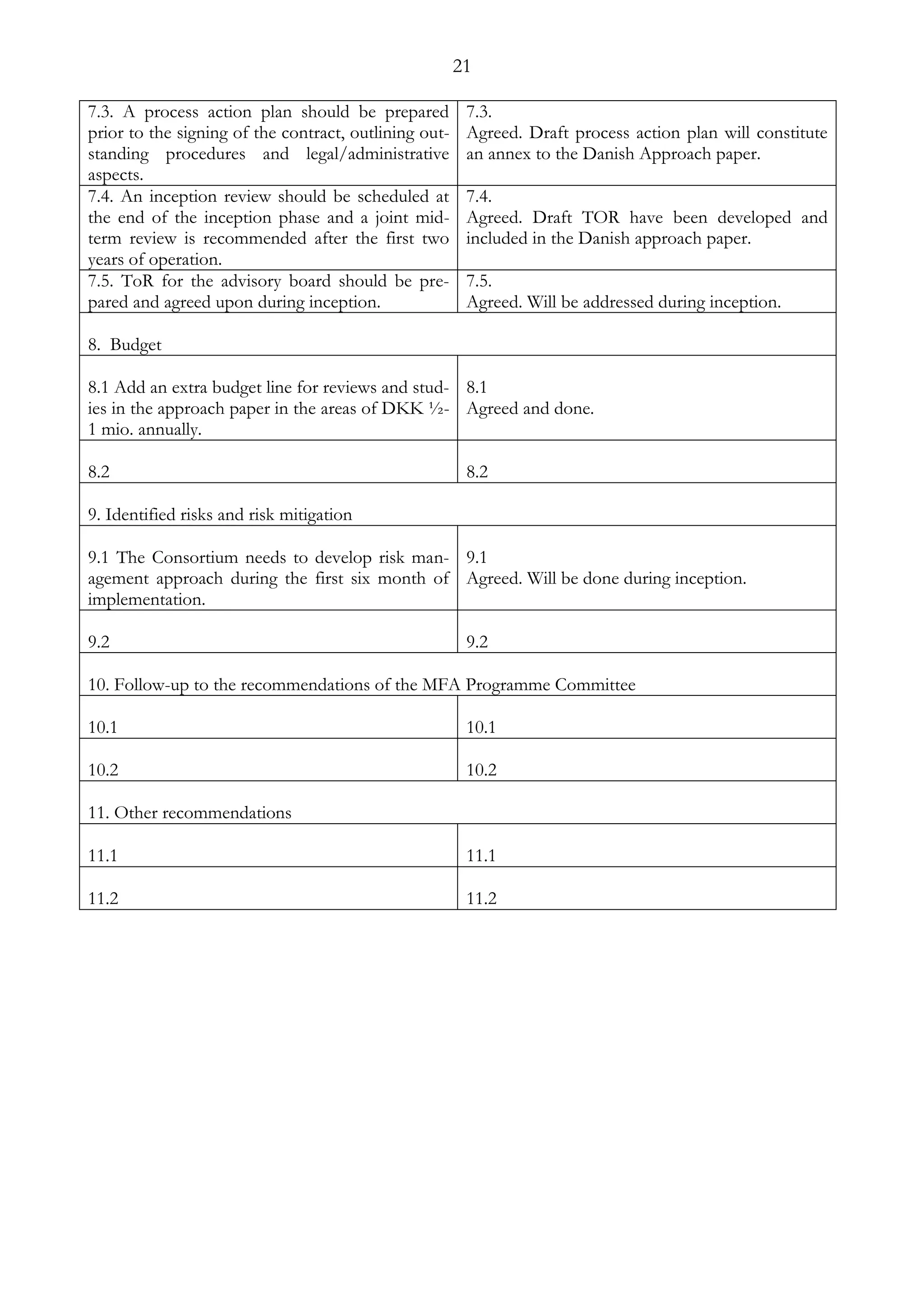This document summarizes a proposal for a 167.2 million DKK joint civil society fund to support advocacy for sexual and reproductive health and rights in the global South. A consortium led by MannionDaniels Ltd. will manage the fund, which will provide grants to civil society organizations over 4 years. The fund aims to strengthen advocacy capacity and influence policies to advance reproductive rights and access to services, especially for marginalized groups. Key elements of the proposal include the fund's governance structure, grant mechanisms, management approach, and monitoring and evaluation framework.

